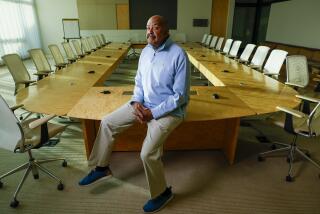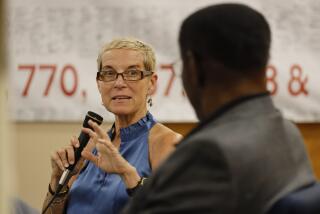At 84, this fierce champion of people with disabilities has decided to retire — sort of
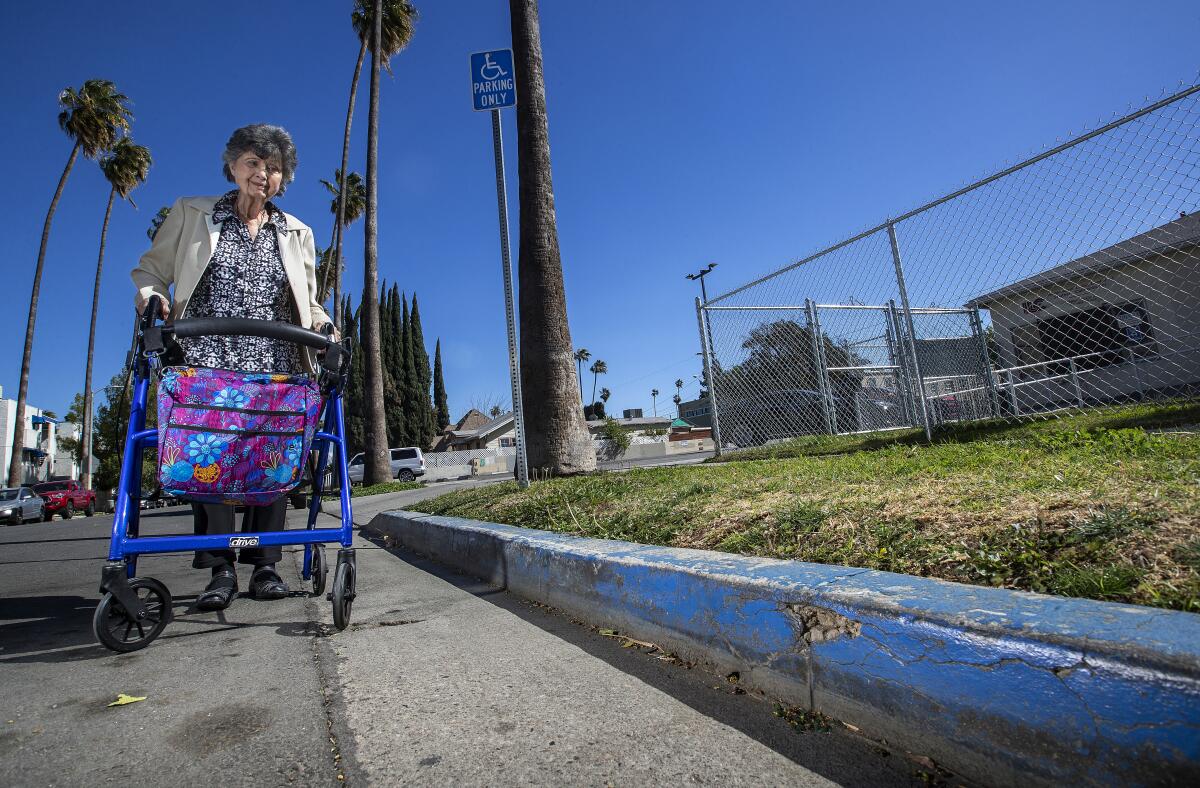
- Share via
It’s easy to take some of the rights we have for granted, to assume that we’ve had them forever, to forget the people who fought so hard to win them.
That’s what I kept thinking this week as I stood at a Van Nuys curb that was more or less covered in blue paint, even if time has chipped some of it away.
That blue curb on the 14000 block of Haynes Street was painted in 1978 — the first of its kind in California and possibly the nation, though that’s not the sort of fact that’s easy to check.
In any case, it designated a parking space for people with disabilities at a time — 12 years before the Americans with Disabilities Act — when the concept of allowing for, let alone requiring, such designated spaces was new.
And as I stood at that curb with the person who pressed for the need for this space and others and then pushed to get them written into law, I thought that if we gave all struggles to expand our rights the due they deserve, the curb would be a historic monument and she would be a household name.

Because Norma Jean Vescovo didn’t just help make blue curbs happen, she has been a leading force in fighting and winning many other battles from getting Los Angeles buses to stop and pick up people in wheelchairs to making the city commit in a $200-million legal settlement to ensuring that a fair share of apartments in its publicly funded affordable housing developments would be made fully accessible to those in wheelchairs and with disabilities including vision and hearing impairments.
I had never heard of Vescovo myself until last week, when a colleague of mine passed on a news release that announced her retirement at the age of 83. Sticking out any job until that age by itself seemed worthy of note — though I soon learned from talking to her that she’s actually 84, and that the work she’s been doing is far more impressive than her longevity in it.
As executive director of the nonprofit Independent Living Center of Southern California since it opened in 1976, Vescovo has tirelessly aided and championed people with disabilities — fighting for their civil rights, pushing back against attitudes and stereotypes that diminish them and working to improve their opportunities on many fronts.
The center, which gets government funding but also takes donations, offers anyone with a disability a wide range of free services, among them assistance in finding housing, computer and vocational training, job placement and coaching, peer support and classes to strengthen the independence of those who need extra help in such areas as meal planning, money management, self care and social skills.
It helps those with traumatic brain injuries relearn skills they’ve lost. It helps those having trouble accessing benefits figure out how to navigate government programs and applications and forms. The aim of the center, which has always had people with disabilities on its staff and board, is to give those who use its services the tools they need to help themselves.
“If somebody works for something, there’s more chance they’re going to stick with it,” Vescovo told me. “If you’re doing it for them, it’s just like Ma’s taking care of them.”

A network of 28 such centers now covers the state, but Vescovo’s was one of the first.
And just as the reach of the centers grew over the years, so did Vescovo’s commitment to her ever-widening cause, which started out narrow and personal.
At 8 years old in Denver, Vescovo had been pulled out of school after she was diagnosed, it turned out erroneously, with polio. Her doctor later determined that she had rheumatic fever and rheumatoid arthritis. She spent most of her childhood at home and wasn’t able to get educational assistance from her school until she was 14 — at which point, she was granted one hour of instruction a week, on condition that she go to the teacher’s home. Still, she went back to school at 15, graduated and won a scholarship to college.
She was married and living in the Valley when it became clear that her second child, a son, who was precocious intellectually, was behind in his physical development. Doctor after doctor failed to diagnose what was wrong — and when she tried to enroll him in a regular public school, she was turned away. When her son was 6, she finally got a diagnosis: cerebral palsy. She also got him a place in a special education school. By then, she’d just had her third child, a daughter, who also had cerebral palsy.
Vescovo’s life as an activist for people with disabilities really began when she started working with other parents of children with disabilities on issues they had in common. She went from organizing parents at her son’s school to organizing parents across multiple special-education schools to push for better services and educational options and higher expectations for their children.
As her network expanded and she learned of the host of ways in which people with many different kinds of disabilities were shortchanged and unaccommodated and discriminated against, the scope of her ambition to make change only grew. She worked with Mayor Tom Bradley in shaping the city’s first office focused on the disabled. She had a hand in the creation of many laws dealing with disability and helped make sure that those with disabilities were remembered in many other pieces of legislation on other issues.
Frankly, it’s hard to cover in brief even a fraction of Vescovo’s activism. She’s done so much over such a long time.
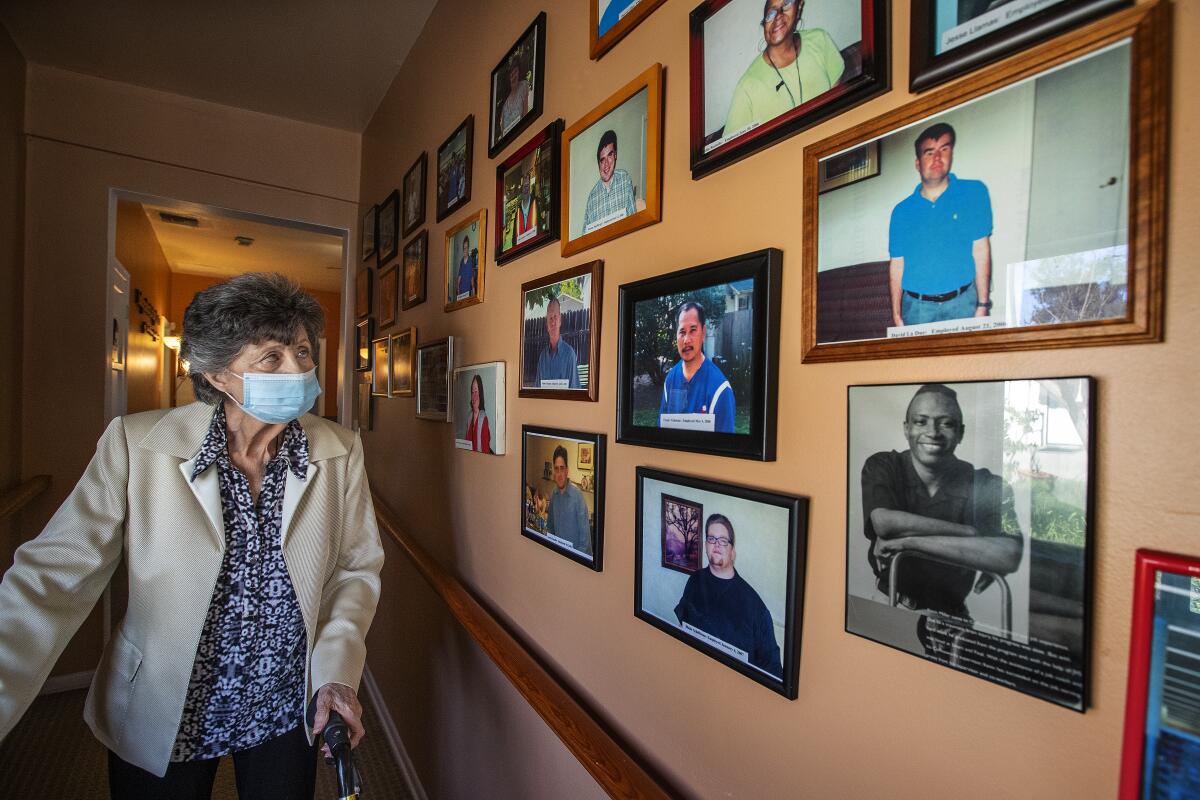
“For Norma, it wasn’t her job, it was her life,” said Joe Xavier, director of the state’s Department of Rehabilitation, which provides programs and services that help people with disabilities become employed, live independently and achieve equity and equality. He said he has known of her for decades and gotten to know her and the strength of her convictions well over the last 12 years.
She was never one to back down when she thought something needed doing, he told me. “She was open to conversations about how but she was rarely open to a conversation that started with no.”
Xavier, who is blind, said that he frequently credits his achievements to “having somebody who set an expectation” that he would achieve and “having people believe in me when I may not always have believed in me.” Vescovo’s work has exemplified that kind of support, he said. He described her to me as “a giant.”
In person, she is a small woman, who talks at a rapid clip. On the phone and when I visited her this week, she reeled off one story after another.
In Los Angeles, disabled people face daily challenges far beyond sidewalks damaged by roots and crowded with scooters and tents.
One of my favorites had to do with a very media-savvy protest she organized in 1981.
At the center, Vescovo often heard from people who used wheelchairs about the public transportation problems they were having. They would wait at a bus stop only to have the bus driver see them and drive on or the bus would stop and the driver would claim not to have the key to operate the wheelchair lift or not to know how to or have enough time to use it.
She decided to make the little-known problem highly visible. She had a group of protesters, many in wheelchairs, block a freeway ramp in Tarzana. In front of cameras, as the protest was happening, a bus pulled up at a stop and its driver refused to pick up a woman in a wheelchair, saying he did not have the lift key. According to Vescovo, the next day, after the press coverage, missing keys seemed to have been found.
Things have gotten better, she told me — hardly perfect but better. There are still so many fights to be fought on so many fronts.
“Each time you do something, you learn more about what you can do and who you can go to and who you can depend on,” she told me. And then you have to keep circling back to make sure the progress you’ve made stays made — to fight to hold onto the ground you’ve gained in the face of budget cuts and new administrations and neglect.
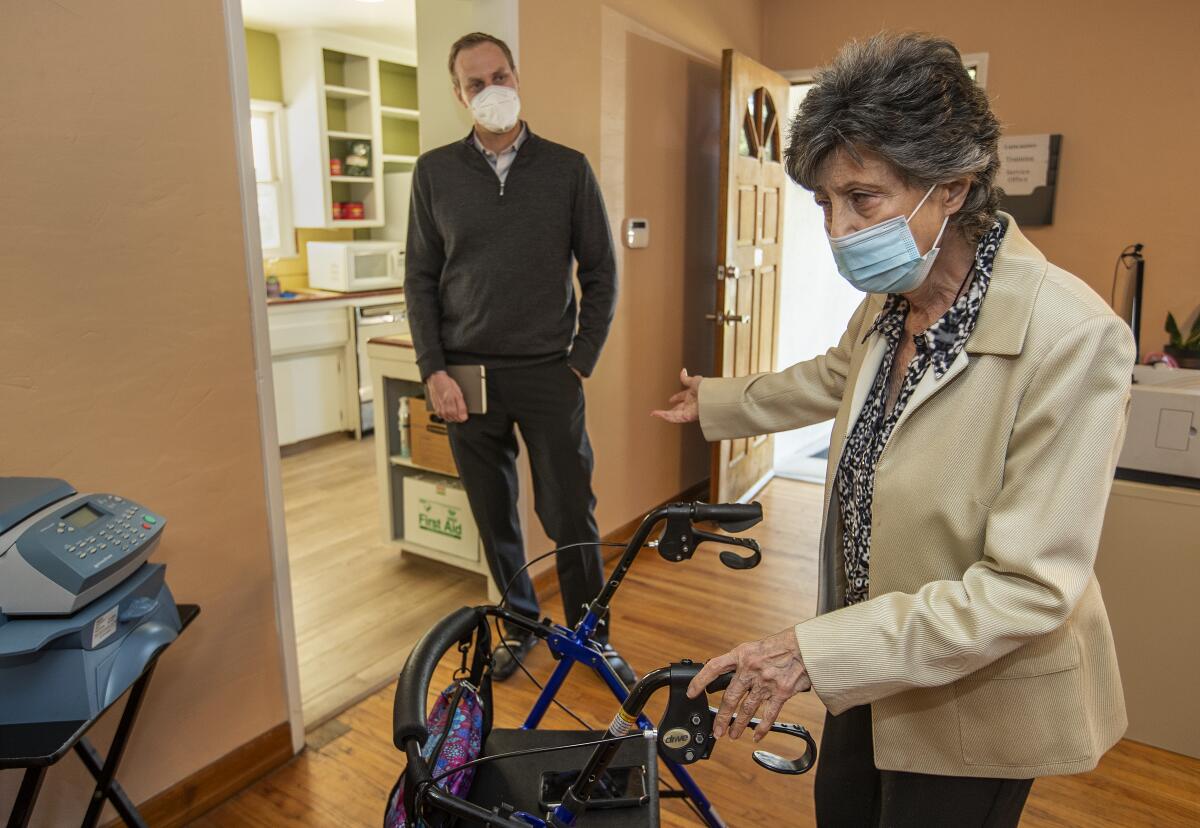
All of which makes retirement hard. “I’m putting the world on his shoulders,” Vescovo told me of her successor, Christopher Wells, who is less than half her age at 38.
Vescovo uses a walker now, but she’s not a person who in any other way shows much evidence of slowing down. She handed over leadership of the center to Wells last month. But she told me she plans to be around to help him learn the ropes at least until April.
After all, there’s so much history to cover.
More to Read
Sign up for Essential California
The most important California stories and recommendations in your inbox every morning.
You may occasionally receive promotional content from the Los Angeles Times.

